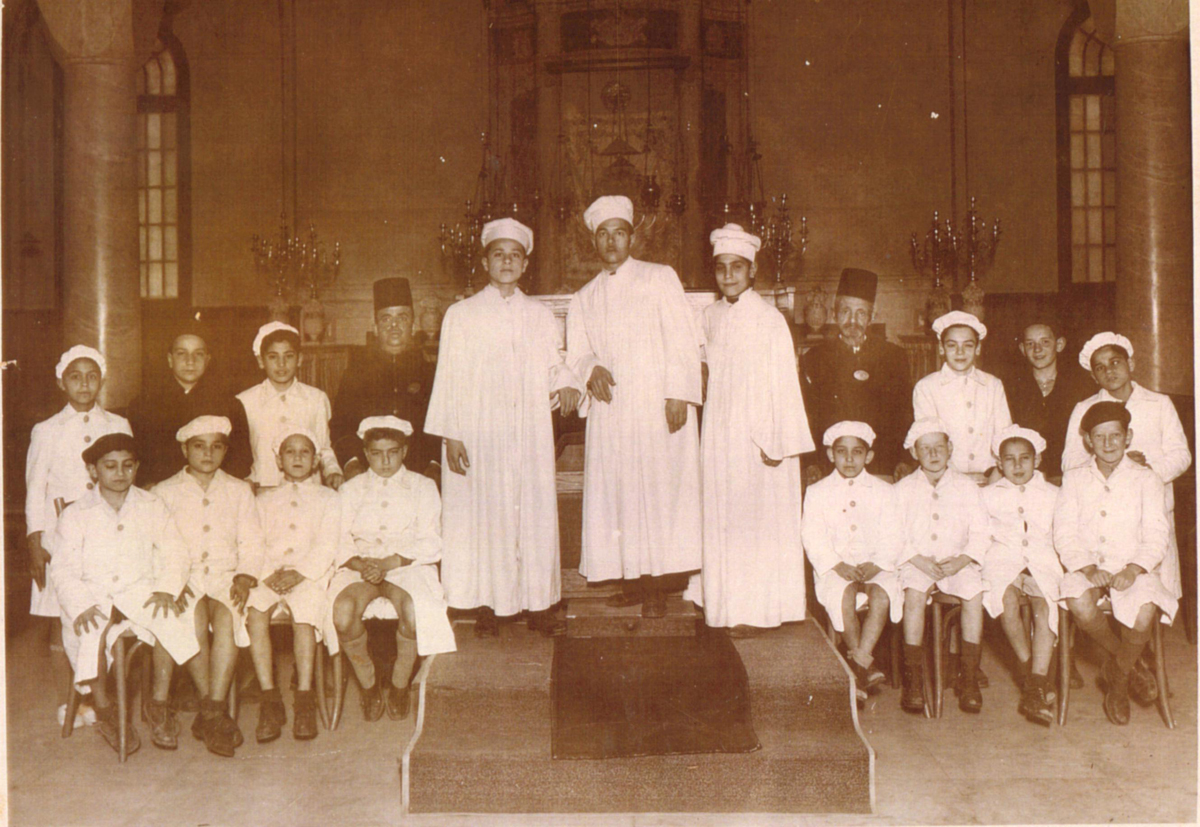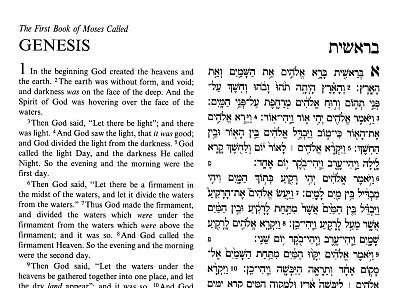Any student of a foreign language knows that the process of translating a text can be laden with unexpected choices about words, sentence structure, and phrases that don’t make sense in the target language. Now imagine the pressures of translating a sacred text whose language is well known and imbued with religious significance and symbolism. Our guest Leonard Greenspoon from Creighton University has done just that with translators of the Jewish Bible over the centuries. In this episode, Dr. Greespoon takes us on a fascinating journey into a Jewish perspective on how and translating the Bible is necessary, and how and why it matters. A link to Dr. Greenspoon’s longer lecture “How and Why Jews Translate the Bible (and How And Why it Matters)” can be found on our website: http://sites.utexas.edu/15minutehistory/2015/04/29/episode-67-how-jews-translate-the-bible-and-why/
Guests
 Leonard GreenspoonKlutznick Chair in Jewish Civilization and Professor of Theology at Creighton University
Leonard GreenspoonKlutznick Chair in Jewish Civilization and Professor of Theology at Creighton University
Hosts
 Christopher RosePostdoctoral Fellow, Institute for Historical Studies, The University of Texas at Austin
Christopher RosePostdoctoral Fellow, Institute for Historical Studies, The University of Texas at Austin
You gave a talk titled “How and Why Jews Translate the Bible and How and Why it Matters.” My first question is a technical one, which has to do with translating religious texts. My own background is Islamic Studies and, for example, the Qur’an is only the Qur’an when it’s in the Arabic language. If you take it out of Arabic and translate it into any other language, it’s an interpretation or a rendition, but it’s not the actual Qur’an anymore. When you’re talking about translation of Jewish texts, does it have a similar meaning, is it that rigid, or can be quote-unquote translated?
That’s an excellent question. We might go back, to the Greek term hermeneo, which means “to translate” and it means “to interpret,” so that translation in and of itself is interpretation. This is especially the case when we go, for example, from Ancient Hebrew to modern day English, because we’ve got several thousand years of time that separate the two cultures, and the languages are different in that English is Indo-European and Hebrew is Semitic.
The question about the status of translations in Judaism is an interesting one because, for the most part, the translations are intended to complement or accompany the original, but not to take their place. On the other hand, there have been some Jewish translations that were intended to be essentially “the Bible,” in Arabic or in German or in Greek. What I can say is that, as far as I know, there’s no synagogue, no matter how reformed, modern, no matter how non-traditional that has the scrolls–you know, every synagogue has at least one scroll that contains the Torah or the five books of Moses. So far as I know, every synagogue, everywhere in the world has that in Hebrew. And when it’s taken out and read, it’s read in Hebrew. So, there’s an expectation that at least the religious and often the lay leadership of the synagogue–and some of its members–will be conversant and familiar with the Hebrew, and be able to read it—-sometimes essentially on sight. But it’s not expected, even in a traditional synagogue, that everyone will understand the Hebrew, and so consequentially every synagogue, including ultra-Orthodox synagogues, will have a translation and will make some use of it. So, in general, I would say that in Judaism it’s not that it must be in the original in order to be the sacred text, on the other hand we might say that Judaism occupies a midpoint between Islam and Christianity, especially Protestantism.
Essentially for Protestants, I think it’s fair to say the Bible is whatever translation you happen to have. There’s very little awareness among Protestants, and probably among most Catholics, that what we’re dealing with is a translation. The only analog or parallel to the insistence on some knowledge in the Jewish Community is along some Greek Orthodox, children go to Greek school, as in Judaism you would go to Sunday or Hebrew school and the language is something that still is part of the service and part of the liturgy. So, again, Judaism occupies a mid-realm between Protestantism and Islam.
Given that there is this relative importance of the original Hebrew text, how does one then take on the responsibility of translating this text into another language? It strikes me quite different than translating casual correspondence–there has to be some thought put in to how to render the text.
You’re absolutely correct. This would be true, presumably of any religious group that’s translating a similar text. In Judaism there has not been an insistence on not translating the text literally, in fact, the literal sense of the text is not an important feature in Judaism–just as, by the way, it’s not an important feature in Roman Catholicism. The text can be translated in what we would say is a fairly formal translation type, which is more literal. Today we tend to use the terms “formal” and “functional” equivalence. A formal equivalence” translation is that the idea or the meaning of the text is inexplicably bound up with the form. Now, the form of Biblical Hebrew is very different from the form of modern English. Therefore, if a Biblical text is translated in the formal sense, it will sound foreign to today’s reader. Now, in and of itself, that is not a bad thing. After all, it’s ancient text, it is a foreign text.
Another view is that when you do a translation you should ask the question, “What did the original author intend to say to his audience, and how do we say the same thing?” This is called “functional equivalence.” It’s especially popular among protestants and among those for whom preaching the word of God often to people to whom English is a second language, and to whom this is important. In a functional equivalence, you’re less concerned about the form and the philosophy behind it, if you will, is that what matters is replicating its meaning and that replicating the meaning is separate from the form. Many Jewish translations have been formal equivalents — more literal — others have been functional equivalents, and that does not need to be a dominating factor.
For Jews, first and foremost, the translation of the Bible is the translation of the Hebrew Bible, which in contents is the same as the Protestant Old Testament, but it has a different order. In my preferred kind of translation, the Hebrew appears on one page, and then facing it is the English, or German, or other modern language into which it’s been translated. Because this reminds us that the translation should be seen not as a replacement but as an accompaniment to it. Now, many translations come out in a variety of formats–having Hebrew on one side and, say, English on the other side is expensive and it’s not always possible if you’re trying to make a low cost edition of a particular translation. The title page will often have Hebrew on it, the names of the books will appear in Hebrew. The five books of Moses, or the Torah, is read on a yearly cycle–this will often be marked in a translation which is intended for a Jewish audience, and, depending on the edition, Bibles often have what we call “parent texts,” which is to say an introduction to the volume, an introduction to various books, and a variety of notes, which could be exegetical, lexicographical, information can be put into a note. And a Jewish translation will always give greater attention to the Jewish exegetical tradition, and a Jewish translation will exclude any kind of translation or interpretation that has been associated with Christians.
So, for example, the very beginning of the Genesis which can be translated “When God began to create” or “In the beginning, God created” — there’s an expression “ruah Elohim”– Elohim is the word for God, and ruah is a word that can mean breath, it can be wind, or it can be spirit. In many conservative Christian translations, the word “spirit” appears with a capital s. Now, it’s important to note that Hebrew doesn’t have capital and small letters–
–right–
Any word which is capitalized, generally because it’s a proper name, is a decision by the translators. The same is true, in effect, for the Greek because the Greek manuscript is written with all capital letters or all small letters. The decision to capitalize the letter s in the word spirit, if that’s the translation used, is intended to equate the spirit of God in Genesis 1 with the Holy Spirit. This is a Christological interpretation. Within a Christological context, I’m not going to say it’s wrong, but it’s one of many features that you would not find in a Jewish translation.
You’ve made some interesting points regarding the way a Jewish translation of the Bible might read, and a Christian interpretation might read. Are these the kinds of things that make the study of Jewish-specific translations of the Bible important when we’re looking at the overall trajectory of Biblical scholarship?
Probably not!
That is to say, comparisons between Jewish and Christian interpretations has its place, but what I’m most interested in is the cultural, the social, the historical and political context in which Jewish translators worked, and how that effected the translations they did.
For example, throughout Europe up until the middle of the 18th century, Jews were disenfranchised minorities. They were often congregated into particular places where they could live, they were not able to have jobs, own businesses–they lived a very constructive life. Yet, they produced amazing texts, and the translations of the Bible are just a small portion of those amazing texts. But, how did a translator operate? What was he trying to do?

I say ‘he’ here because, so far as we know, all of the translations by Jews for Jews have been produced by males, sometimes individuals, sometimes committees. One of the contrasts that I mentioned before will be important: is the translator trying to imbue that translated text with a lot of Hebraisms, with a lot of Semiticisms, with a lot of words and expressions and forms that reflect the original Hebrew? That, for example, is what was done in much of the first translation, the Septuagint, of the Hebrew into the Greek, by Jews in Alexandria, Egypt, around 280 years before the birth of Jesus. We are now looking at that translation as a means by which the Jewish community, and most translations are representative of a community, with community support–how that community that moved into Alexandria, Egypt, shortly after it was founded by Alexander the Great and Alexandria became the first or second city of the Hellenistic world, at some points surpassing Rome, and certainly surpassing Athens. So, the Jews are moving into a new culture, and movement from Judea, Palestine, to Egypt, that’s a geographical movement; moving from Hebrew or Aramaic into Greek, that’s a linguistic movement, but even more was the cultural movement. And so, what were the Jews to do?
This is a question that was asked in the 20th century as two-and-one-half million Jews moved from Eastern Europe to the United States. Should they segregate themselves and continue their practices, not bothering to become part of the general community, learning the languages and cultures of the general community, or should they try to acculturate? If they acculturate, will they lose it all? In Alexandria, Egypt, there may have been 500,000 Jews, but there were seven million other people–they were a Jewish minority–and the Greek translators appear–this is a newer idea in translation studies, or studies of Jewish translation–they appear to have adopted what’s called a cultural resistance. They put the translation into Greek because that was indeed the language that people were speaking, but they kept enough of the Hebrew so that it did not sound like everyday Greek, it would sound foreign to a Greek speaker. And that foreign-ness could be seen as awkward because if you read the Greek text, it’s awkward Greek. But, their putting it into their translation was a way of resisting full Hellenization, if you will, fully becoming Greek because the translation, while in Greek, had a lot of features kept from the Hebrew. This is a major issue–they major issue of acculturation: what happens when a minority of Jews live and especially move into an area that is majority something else, which has happened everywhere except in modern Israel. So, this is a window into that issue.
What about the role of men and women? Throughout much of the history of Bible translation, especially into Yiddish and then into German, the translations on the title page would say “For women” or “For the classroom, women and children.” What were they saying? There was sort of a facade, a fiction that every Jewish man would know the text in Hebrew, he wouldn’t need translation — it was only for children and women. Now, the children who were female would always need it, the children who were male would grow up and become Hebrew-knowing males. That was only a fiction. So, the translation itself: who was its intended audience?

And then, within Judaism there were different strands of belief. The view, which is pretty much universal among Jews now, is what we call rabbinic. We follow the rabbinic principles that were laid out by the rabbis of the Talmud in the 3rd to 6th centuries. But not all Jews were rabbinic. There was a famous translator, whose name was Saadia Gaon in the 10th century–Gaon is a name like “teacher”–and he did a translation into Arabic. And one of his goals was to combat other groups of Jews–these Jews were called Karaites–who didn’t follow the rabbis. He wasn’t interested in having a literal translation, he put into his translation the Rabbinic interpretation. A classic example is that three times in the Hebrew Bible the text reads “You shall not boil a kid in its mother’s milk.” What does that mean? You shouldn’t boil a kid in its mother’s milk. Does it go back to some pagan practice that was being shunned? No body actually knows. The rabbis understood that to mean you don’t eat milk and meat together, you don’t prepare milk and meat together, you don’t use the same utensils in preparing or eating them.
So, in his translation, when Saadia came across the passage, “Do not boil a kid in its mother’s milk,” he put in his translation into Arabic: “Don’t prepare milk and meat products together.” Now, is that what the text says? Well, not by any literal meaning of it, but this interpretive element of which we spoke before became dominant. And when we follow it through to modern translations there’s a widely known modern translation for Orthodox Jews that uses the interpretation of certain classic rabbinic exegeses or interpreters and they put that in the text, and the literal text is not there. Jews are not literalists–literal textual studies is pretty much a Protestant fixation, it’s not something Catholics or Jews have highlighted. But it is interesting that you can go from “Do not boil a kid in its mother’s milk” and put in the text instead of that “Don’t prepare milk and meat products together.” You get that through the interpretive element. This is all very interesting.
And then there’s some other areas that people don’t often think of, but if you think of a Bible translation as a major project which takes a lot of resources–human resources, financial resources, the translators have to be taken care of, the text has to be transcribed or printed, it has to be produced, it has to be sold. These are generally beyond, certainly today but it was true in antiquity in many places as well, it can’t be done by one individual. It has to be done by a corporate group, whether that’s a religious group or a philanthropic group, or it’s a money making group. Who pays for the translation is not an inconsequential matter. You look at Bible translations today, it has “this is who prepared it.” Some Protestant translations it says right at the beginning, “Only people who believe in the inerrancy of Biblical texts, only people who believe in the literal understanding of the texts, can be translators.” That’s not a Jewish way of doing things, but that is the way that some Protestants would do it. And then the organization that supports it would be given and you can make some identifications. There’s any number of aspects of Bible translation where the Jewish translation is part of a rich heritage within Judaism.
It also allows us to see examples which haven’t been looked at as much as they should of general concepts and general practices in Bible translation. So, I used to say that if you went to a big bookstore–but we have very few big bookstores left–if you went to a big bookstore and went to the Bible section, you’d be amazed at how many Bibles there are. Often they’re the very same Bible repackaged, repackaged, repackaged, repackaged. At least the last time I look, which could be a decade ago, Jewish Bibles were not in the Bible section, they were in the Jewish Studies section. Somebody made a judgement, “Oh, they don’t belong over here, this is where Christian Bibles are.” And there are all sorts of issues like that that I think have been understudied and therefore undervalued.
